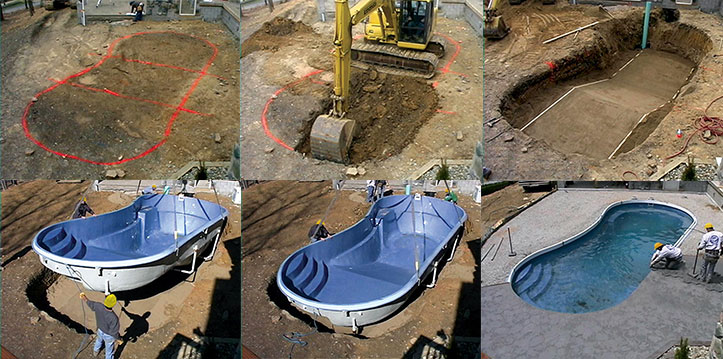A swimming pool’s impact on your homeowner’s insurance premiums will be determined by your policy’s specific terms. Specifically, whether your premiums remain the same or increase when installing a swimming pool will depend on whether your policy already includes coverage for pools, which is somewhat common in the Southern United States, and whether you would like to increase your coverage limits. Even if you decide to enhance your policy’s coverage or limits, there are preventative measures you can take to minimize the impact on your homeowner’s insurance premiums.
Swimming pools are an attractive nuisance
In the insurance industry, swimming pools are the most often cited example of an “attractive nuisance.” USLegal explains that an attractive nuisance is anything that might attract a child and pose a danger to the unsupervised child. Examples of attractive nuisances include trampolines, farm equipment, man-made ponds, and, of course, swimming pools.
Homeowners are responsible for taking reasonable measures to protect naïve children from the potential danger posed by an attractive nuisance. For homeowners with pools, reasonable measures may include installing a(n):
- fence around the perimeter of the pool
- automatic safety cover
- solid or mesh safety cover
- posting a sign
- providing accessible safety equipment
Increase your homeowner’s coverage and limits
Even if you take reasonable precautionary measures, you may still want to increase your homeowner’s insurance coverage and limits. Of course, any increase in your homeowner’s insurance will result in a higher annual premium because the insurance company is assuming a greater risk.
First, you will need to confirm that your homeowner’s insurance policy covers swimming pools. Many policies for Houston-area homes already do, because pools are so common in the area. If yours doesn’t, you will need to add this coverage.
Second, you may want to increase the liability coverage afforded by your homeowner’s insurance. Most homeowner’s policies come with a standard $100,000 of liability coverage, and many homeowners never consider increasing that limit. According to Zacks Investment Research, insurance companies typically recommend increasing liability coverage from $100,000 to $500,000 when installing a swimming pool. In states where swimming pools aren’t standard, Zacks says, such an increase might add $50 to $75 to a homeowner’s insurance annual premium. In areas like Houston, where insurance companies often plan on residents having pools, the increase might be less.
Third, if your assets are significant, you may want to purchase additional liability coverage through an umbrella insurance policy. An umbrella insurance policy provides a lot more liability coverage, well beyond the typical limits of a homeowner’s policy, at an affordable price. Zacks research shows that most umbrella insurance policies cost $200 to $300 annually for $1 million in coverage. While this technically is not an increase in your homeowner’s insurance premium, anyone who would purchase an umbrella policy when installing a pool should take this additional cost into account.
Keep your premiums under control
If you’re considering installing a pool in your backyard, talk to both your insurance agent and pool builder about the effect it will have on your homeowner’s insurance. Your agent will be able to explain your current homeowner’s policy and suggest adjustments that might be appropriate. Your pool builder will be able to give you ideas for incorporating appropriate safety measures, such as an automatic or manual pool safety cover, into your pool’s design. When working closely with them, you should be able to minimize a pool’s effect on your homeowner’s insurance premiums. Depending on how much additional coverage you want, you might be able to keep the increase in your premiums to just a few dollars by taking appropriate safety measures.







Join the discussion